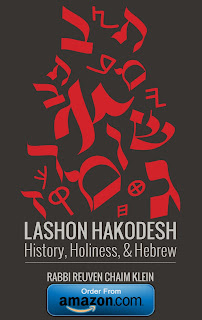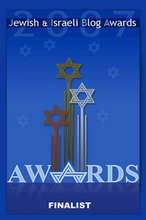Monday, October 21, 2013
Rav Shach: The Emissary of Peace
Guest post by: Y. Cohn
Those who were close to Rav Shach know to what extent he desired peace and only peace. Rav Lorencz testified personally that there was no lover of shalom and pursuer of peace like Rav Shach. But when certain actions were taken that were contrary to halacha and to the Torah way, he was forced to react.
However, whenever he spoke out against a negative phenomenon, he was forthright and showed no distinction between one community or following and another, one circle or another, between those who were distant from him and those close to him.
Rav Shach did not bear rancor against any person, and would forgive all those who insulted him. However, he often clarified his stand, both in speech and in writing, that the slander spread against him about his persecution of chassidim was something he could never forgive, for it had transformed him into a baal machlokes at a time when he loved peace and pursued it to the nth degree.
Rav Shach said during one of the toughest times that whoever was in the position of decision-making must have no fears or reservations regarding being branded a ‘quarrel monger.’
At the founding meeting of Degel Hatorah in 5749, Rav Shach stated: “They say that we are quarrel seekers… I heard in the name of Rav Yehoshua Leib Diskin an explanation of Chazal on the verse, ‘And Bnei Yisroel mourned Moshe.’ Rashi quotes that this refers to the men. When Aharon Hakohen, who was a pursuer and lover of truth, passed away, it says that all of Klal Yisroel wept over him since he would make peace between man and wife, friend and enemy.
“Rav Yehoshua was puzzled by this. The Torah seeks to tell of Moshe’s praises. Why, then, mention here that only the men mourned him?
“The truth is that there is a great element of praise here. Aharon Hakohen loved peace and pursued it, so it is no wonder that everyone loved him. But Moshe Rabbeinu’s task was to judge and pass sentence in matters of argument and disagreement, in dinei Torah between two factions. He had to rule in favor of one side and against the other, so that it was inevitable that people would be hurt or might accuse him of favoritism, prejudice and fomenting dissension. It is impossible to justify everyone. The fact that not all of Klal Yisroel mourned his passing shows that he was truly impartial and ruled according to the dictates of pure justice.”
Rav Lorencz once wrote that “Applicable and fitting are these words to the very one who uttered them. By innate nature, Rav Shach was basically a peace lover, yet he was not deterred from overriding this trait if he felt it necessary as a leader to denounce one public or another when they conducted themselves contrary to the way of the Torah.”
Rav Shach was the biggest oheiv Yisroel of the last generation. And his battle was one that was fought lesheim Shomayim.Unfortunately, we have some in our community - our own Torah kehillos - who, overtly or not, in print or via some other medium, have shown by their actions that they’d prefer to make believe like Rav Shach’s stances were meaningless. They’d prefer to do what is comfortable to them, rewriting history and ignoring what Rav Shach said and what Rav Shach taught. Their actions and their complete dismissal of Rav Shach’s hashkafah are an insult to the manhig hador of the last generation and to all bnei Torah who followed his direction and still do to this day.
We in the Torah community cannot allow this revisionist history to be perpetuated under our noses time and again.
And never, ever, should we allow those in the supposed “peace camp” to accuse the protectors of Torah and mesorah of being baalei machlokes. That’s an old trick that Rav Shach, himself,.. identified and refuted.
Those who fight for the authenticity of Torah are not baalei machlokes, but pursuers of truth.
Those who refuse to bend to false calls for peace and the rewriting of history are not baalei machlokes, but pursuers of emes.
Posted by
Reuven Chaim Klein
at
12:14 PM
2
comments
![]()
Wednesday, October 09, 2013
The Golden Age and Yossele Rosenblatt
The Golden Age and Yossele Rosenblatt
For many people the name "Yossele Rosenblatt" conjures up images of the Golden Age of Jewish cantorial music. Jewish immigrants of the late 19th and early 20th centuries saw Hazzanut as their connection to their former lives, the traditions of their shtetels and the world of their parents and grandparents. Regardless of philosophical bents or religious denominations almost all Jewish institutions, from Hassidic Rebbes to Reform Rabbis, incorporated hazzanut into their liturgies. Jewish leadership throughout the American Jewish world recognized that the congregations craved the customary singing and chanting of Eastern European Hazzanut. Early 20th century Jewish institutions vied with each other to bring the highest possible level of cantorial expression to their services.
Yossele Rosenblatt was one of the most widely-recognized cantors of the late 19th and early 20th centuries. Simply "Yossele," to his audiences and admirers, he was a highly-sought-after hazzan who expressed his love of Jewish liturgy with every fiber of his being.
Yossele was born to a family of hazzanim in the Ukraine in 1882. The family followed the Ruzhiner Rebbe and Yossele's father often brought Yossele with him to perform at the court of the Sadagora Rebbe. Yossele and his father toured together. Yossele's father would chant the services while Yossele accompanied. By his Bar Mitzvah Yossele was identified as a prodigy whose unique talent infused Jewish tefillot with new strength and power.
Yossele's father was afraid that the wrong influence might weaken Yossele's devout religious commitment so he refused to send Yossele to any of the great yeshivot of Europe. This lack of learning, however, this did not diminish Yossele's abilities or his commitment to religious observance. He accepted the position of head hazzan of the Munckz community when he was only 18 and moved to Pressburg before immigrating to America in 1912. When he arrived in New York he already had a secured position as the hazzan at the Ohab Zedek synagogue.
Yossele became an overnight sensation in America. Audiences recognized his incredible sense of melody which melded with a strong tenor to infuse the tefillot with new spiritual meanings. Jews of all social positions and statuses filled his performances but it was the simple Jews, the new immigrants who were struggling to feed their families, who absolutely adored him. His music spoke of his passion for his people, his culture and his religion and it was this fervor that enthused the common Jews who flocked to him, hearing in his chants the sounds and senses of their childhoods.
Yossele chanted according to a structured, metered style which continues to influence hazzanut in all streams of Judaism till today. The familiar Askanazi sounds of his audiences' youth were fused with a dramatic style and soothing emotive expressions that satisfied the listeners' nostalgia for their homelands. He accomplished this by hitting high notes at unusually high speeds and using cantillations to cause his voice to break in the middle of an arrangement. This combined with his ability to transform his voice into a falsetto create "kretches" -- sobs -- in his music to convey deep emotions.
Yossele was famous for his High Holiday hazzanut into which he incorporated compelling sections of operatic-like recitatives, snippets of folk melodies and large sections of improvised chanting. Yossele aimed to create musical dramas that would allow the congregation to experience the liturgy as true supplications as they felt the spirituality of the Days of Awe.
Yossele believed that his voice was a gift from God, to be used only in God's service. His commitment was tested when Cleofonte Campanini, the Chicago Opera's general director, offered him $1000 per performance to sing in Halevy's La Juive opera. Campanili assured Rosenblatt that all of his religious needs would be met including cancelling Shabbat performances and directing the cast to adhere to all rules of modesty. Yossele was tempted but in the end he demurred. He did, however, accept a role in the 1929 Jazz Singer movie starring Al Jolson, a story of a cantor's son who turns to secular music.
Over 180 pieces of Yossele Rosenblatt's work have been preserved including Hasheim Malakh, V'af Hu Hoyo Miskaven and Mi Shebeirakh. He even takes an important role in the collections of the Lowell Milken Music Archive. Yossele's rendition of Tehillim 126, U'vnucho Yomar. was so popular that Israeli leaders considered it as a possible national anthem in 1948 but in the end they chose HaTikva.
Posted by
Reuven Chaim Klein
at
10:17 AM
0
comments
![]()
Friday, October 04, 2013
Qoton Qlassic: Urim and Tumim, Prophecies of the Oracle
For all of my loyal readers (if there are any left):
I am proud to announce that I have revised my essay about the Urim and Tummim, entitled "Prophecies of the Oracle" (which was also printed in my book Prophecies of the Oracle and other Torah Essays). For those who don't remember what this essay is about, here is a short excerpt:
Was the “Urim and Tumim” extant during the period of the Second Holy Temple? Maimonides writes that the Urim and Tumim existed in the Second Holy Temple, but because the Holy Spirit of HaShem did not exist within them, they did not possess the powers to answer questions prophetically. In order for one to receive a message through the Urim and Tumim, one must possess Ruach HaKodesh (divine intuition), which during that time period, no one had possessed. Therefore, although present in the Second Holy Temple, the Urim and Tumim did not perform their intended function. Maimonides proves that they existed in the time of the Second Holy Temple because had they not existed, then the Kohen Gadol (High Priest) would have never been considered fully clothed because the Urim and Tumim are halachikly considered part of the eight holy vestments, which the High Priest must wear while performing the services in the Holy Temple. In providing this as evidence to the Urim and Tumim’s existence during the period of the Second Temple, Maimonides assumes that the Urim and Tumim are indeed considered part of the eight holy vestments of the Kohen Gadol; however, the Ra`avad, Rabbi Avrohom ben Dovid (1125-1198), disagrees with Maimonides’ view. The Raavad wrote that the Urim and Tumim were not essential components in the Kohen Gadol's holy garments. Therefore, according to the Raavad, since because their absence does not disqualify the Kohen Gadol from performing the sacrificial services in the Holy Temple, it is possible that they did not exist at all in the times of the Second Holy Temple.Continue Reading Urim and Tumim: Prophecies of the Oracle...
Posted by
Reuven Chaim Klein
at
5:00 AM
![]()
Subscribe to:
Posts (Atom)


 orcid.org/0000-0001-9317-3282
orcid.org/0000-0001-9317-3282
